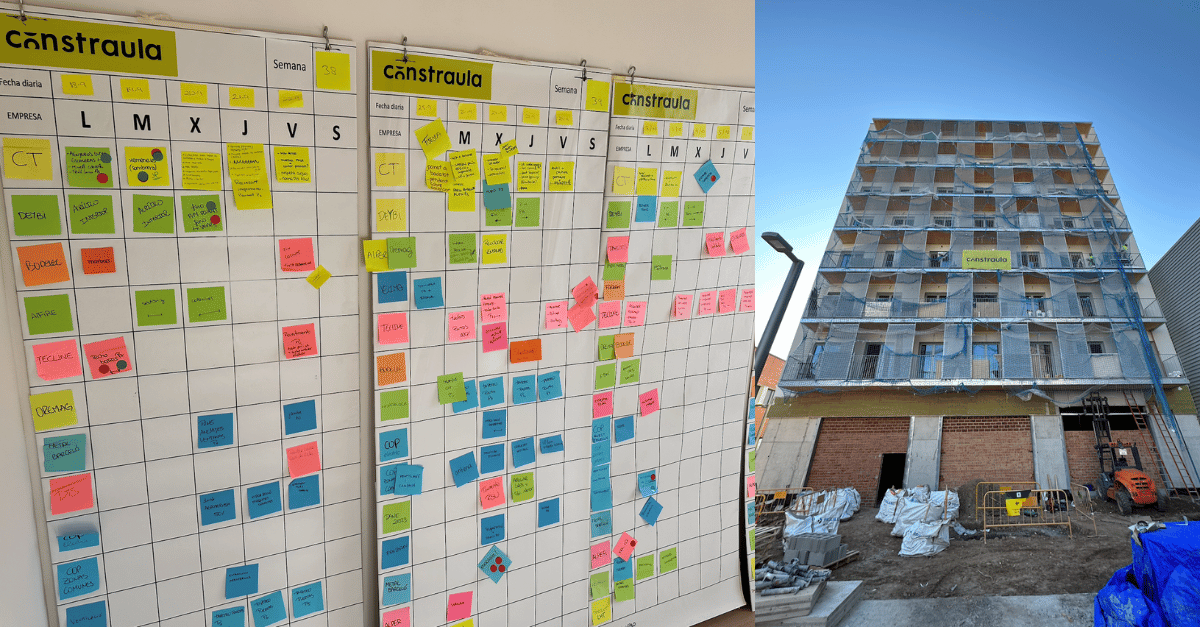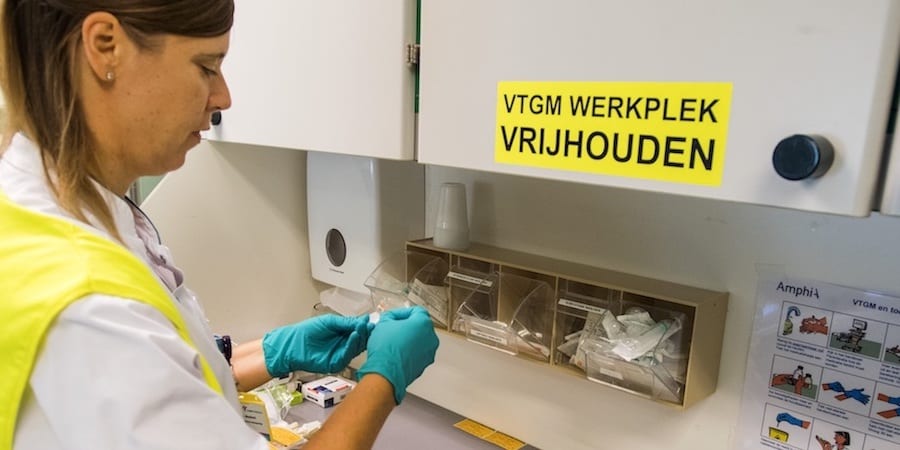
How Auto Trader UK embraced lean to become fully digital
CASE STUDY – Around four years ago, classified ads magazine Auto Trader moved to a web-only business model. As its lean digital transformation progressed, the company discovered why real innovation must become business-as-usual.
Words: Marc McNeill, Customer Experience and Operations Director, Auto Trader UK
Not so long ago, to many British people buying a car meant scanning the pages of the Auto Trader magazine before walking into half a dozen dealerships to hopefully make their decision. Times have changed. Today there is no magazine and people make their decisions online: in fact, 80% of all time spent on automotive classified sites is spent on autotrader.co.uk and 70% of that traffic comes from mobile devices. Once their research is complete, prospective car buyers tend to visit an average of just 1.2-1.5 dealerships.
The final issue of our iconic magazine, Auto Trader, was published on June 28, 2013 – nearly four decades after it first launched. This signaled the end of the transition from a publishing business to a pure-play digital business. Digital gives us new growth opportunities, as well as the ability to test and learn, try new things at speed and “fail fast.” Whilst the business has always welcomed change, there is no doubt this requires a different way of thinking and, more importantly, the right organizational culture.
As the magazine ended, a new CEO, Trevor Mather, came in. He has a background in IT consulting and a lot of affinity with the digital world. From the very beginning, Trevor’s focus was on creating the right culture at Auto Trader – after all, we are all familiar with the adage “Culture eats strategy for breakfast,” right?
BUILDING A NEW CULTURE
When the new CEO joined us, the business was doing a lot of upfront thinking with little space left for experimentation. We wanted to change that and develop the right culture, one that could bring Auto Trader to the next level.
This didn’t mean adopting the lean glossary (just because one uses words like kanban or kaizen, it doesn’t mean they are actually applying lean thinking), but putting values, customers and employees at the heart of our way of thinking.
First, we created a leadership team made up of people from different backgrounds, to whom we asked to work on our company values (at the time, these were not clearly defined): this multi-disciplinary team, and the diversity of thinking it brought, helped us to establish what we stand for as a business.
Our values today – they include the ideas of being curious, reliable, humble, and inspirational, to mention a few – are more than just words on posters hanging to a wall: they can be understood by anyone joining the business. We recruit by these values. All new recruits – no matter what level of the organization they will be working at – have an interview focused on the values with a member of the leadership team, and when they join they go on an off-site to learn about the ideas guiding us for three days (which is also a great way for them to get to know their colleagues).
Once our values were specified, we started to organize ourselves as a new enterprise, which meant we had to start looking at the bigger picture with a clear mission in mind: leading the future of the UK’s auto digital marketplace. With a purpose defined, we created principles we would use to guide our strategy and tactics. For example “achieving our purpose over short term financials.” (Of course, you’d want both, but if there is ever a tension, it is the principle that guides our way of acting.) An example of this was the decision to stop capitalizing our development expenses. The focus and effort to work out what was capitalized and what was operationalized got in the way of continuous improvement. How do you make products better when the CapEx budget for the project they sit under has run out? With the principle agreed, it was easier to stop this from happening. The move obviously hurt our short-term P&L, but had massive benefits for the business.
Another example was “simplicity over sophistication” – which, critically, resulted in the integration of all our sub-brands (we had over 50, each with its own team… imagine the confusion) under the main Auto Trader name.
Our guiding principles also covered people development – for example, “People development over external hires & contractors.” We used to hire a lot of contractors, but the truth is that our product is what defines us and it actually made no sense to have people build it, who were not truly engaged in the business. We had to start investing in people who care, and develop their capabilities to create great products and provide great experiences to our customers.

This was one of the biggest changes Auto Trader has undergone. Before we started our transformation, our work was very much project-based: our Product team defined the specs for a new product and hurled them over the wall to Technology (who was in a different location altogether), with little further communication or collaboration. Instead, we created teams that own the products, rather than individual projects (to this end, the “squads” – something we borrowed from Spotify – are extremely effective). These days, our approach to product development has changed dramatically: first of all, we ask ourselves what we know about the problem, and test our assumption that there is indeed a problem to solve or a need to fulfill, and then give our squads ownership of that problem. It’s great to see our teams empowered to deliver value to our customers.
This level of engagement can only appear if the right conditions are met, and this includes making the business less hierarchical: we previously had a traditional structure, whereas now we have an Operational Leadership Team of around 15 people in charge of decision-making. Our Spotify-inspired squads and tribes, and our belief in servant leadership, are fundamental elements of the new, flatter nature of Auto Trader. This is reflected in many ways: small closed-door meetings between leaders, for example, have been replaced by broader stakeholder workshops and an all-employee conference, where our people can share their experiences, listen to customers, and learn from one another.
Our new culture made us leaner, there is no doubt about it. Before our transformation, the focus of the organization was on “the five big things to tackle” each year, whereas now we are delivering product improvements and iterations more than 50 times a week. We are advanced in our continuous delivery capabilities. This allows us to do things that other businesses would never dream of doing (sometimes, things that others would call foolish): last year, for instance, we successfully implemented a massive change to our billing system and implemented a new telephony platform just two weeks before Christmas – a bold move that most businesses would never approve of. Several weeks later we completed the migration off saleforce.com, something we had been working on over the course of the previous year, with an engineering team that collaborated closely with business stakeholders to replace the system with an internal solution built around the specific needs of our organization.
There is more: our relationship with customers (both buyers and sellers) has changed a lot, because we now see the importance of involving them in the review and design of our products.
With buyers, for example, we run usability labs, asking for their help to test our products and our competitors’; we also ask for their feedback all the time, directly through questionnaires and indirectly through A/B testing on the website. For our trade customers (the sellers) we adopt a different approach: for instance, we invite them to our monthly Discovery Days to talk about products roadmaps and involve them in testing products (we want to learn how to improve further and come to understand what bothered them the most about us and our products in the past week – and how we might help them be more successful through new innovations). Feedback is absolutely invaluable: we capture it regularly and send it to the Voice of the Customer Team, which then takes it to the Product team. This ensures we are constantly acting on the problems our customer raise.

THE REAL MEANING OF INNOVATION
The Auto Trader Way draws inspiration from a number of models and schools of thought. Not only did we borrow ideas from Spotify, but we also had digital thinkers like Marty Cagan and Jeff Gothelf come in and help us inspire change in the organization.
When we started to look at our products in terms of feasibility, desirability and viability, we brought together design thinking and lean startup ideas to find a way to determine whether they ticked all those boxes. Rather than doing a lot of research that ends up gathering dust on a shelf, we began to explore creative ways to validate learning and test hypotheses: in our mind, running experiments is the only way to create a product that customers want.
This lean startup approach has certainly pushed us forward, but we are still trying to make it better. We feel we are still learning. In particular, we are finding that the lean startup principles and techniques are great at helping us come up with ideas, validate them and get traction, but it’s harder to take them from early adopters to mass market (a common grievance, I hear). Take the idea of minimum viable product (MVP) as an example: it’s fantastic and works really well in the startup world, but in a big, mature organization you have a responsibility towards your customers. And that in itself is an experiment – how to bring your customers along as you incrementally improve and change.
Everybody is talking about digital turnarounds these days, and I must say that I think Auto Trader is quite advanced in its own transformation (even though we often forget… humility is one of our values, after all).
But what we have achieved so far is not a result of our ability to apply ideas we have borrowed from Spotify or the lean startup movement, but of the fact that we were able to get our people to feel a sense of ownership in providing innovative digital products to our customers. Perhaps that’s where the biggest lesson lies for us: innovation should come from anywhere and everywhere. Building innovation capabilities outside business-as-usual and far from the team who actually creates the product will invariably fail.
THE AUTHOR

Read more


FEATURE – Embracing lean is like painting: tools are colors, respect for people is the brush, and true change blends both with intention.


CASE STUDY – Thanks to Lean Thinking, this Spanish construction company was able to deliver a challenging project in one year, well ahead of schedule. Here’s how they did it.


INTERVIEW – Bringing nurses together and giving them a space to discuss problems on a regular basis has allowed this hospital in Holland to successfully embrace lean thinking and reap its benefits.


RESEARCH - For most CEOs, working with a sensei is common practice. Yet, many questions remain on this role. This paper aims to bring clarity to the "sensei mystery".

